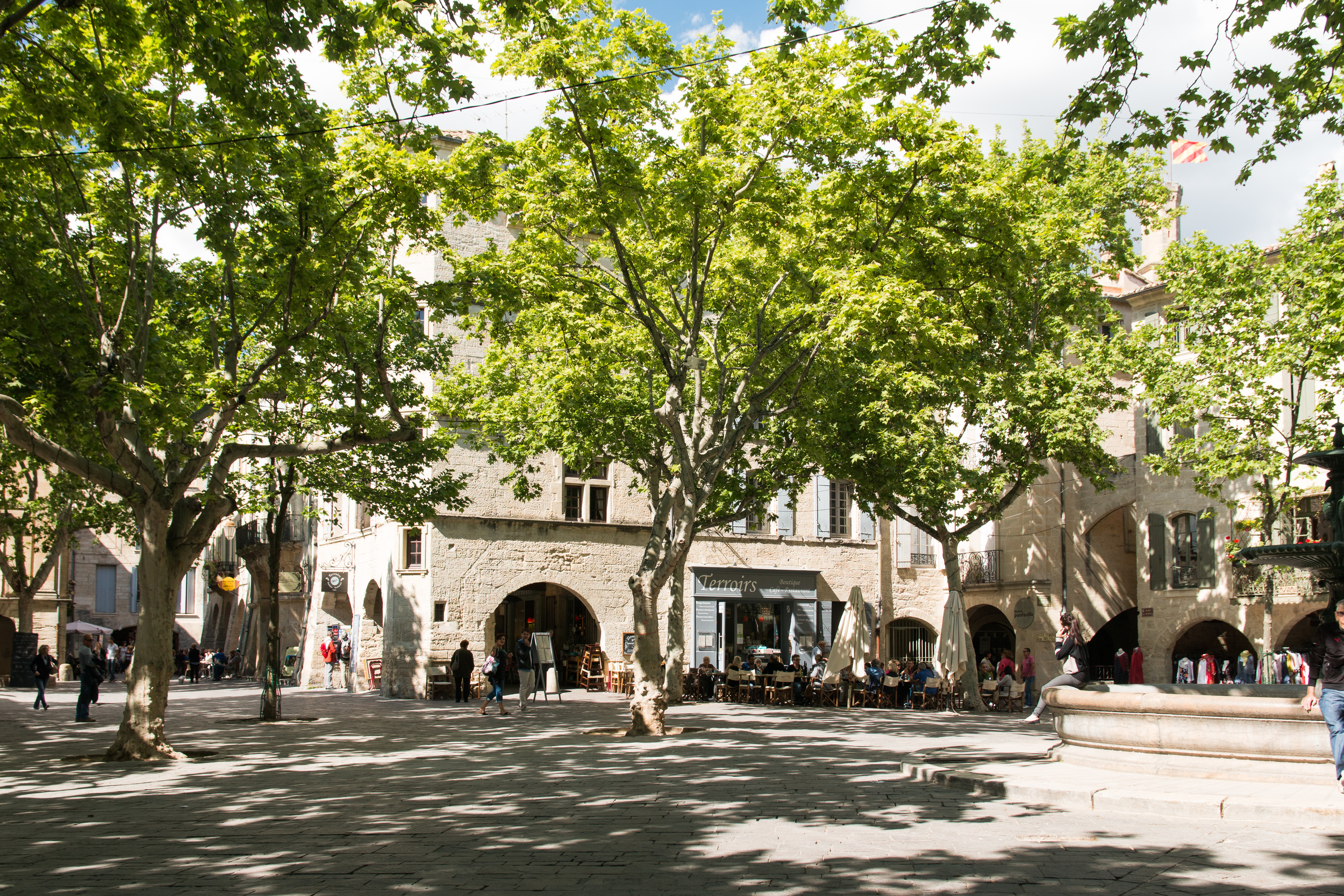The other day I tried and failed to find a great guidebook for the Languedoc-Roussillon area of France since it's one of our honeymoon destinations. I guess it’s still a slightly under-discovered area, which surprises me in some ways because it’s such diverse region full of history and beautiful, varied landscapes. It’s located on the southern coast, west of the Côte d'Azur, and it extends all the way to Spain. Crème-de-Languedoc, which has been a fantastic resource in our planning, has a wonderful quote about it being called the “real South of France”
“thanks to its largely unspoilt countryside, traditional wine-making villages and slower, Mediterranean pace of life. The contrast with the ‘bling’ of the Côte d’Azur and the often prissy artifice of Provence is marked - Languedoc still feels very traditionally French, with villages that aren’t emptied in winter, good food and wine that doesn’t cost the earth, and countryside that is as beautiful as anything in the Luberon or Tuscany. Here, you’ll find unspoilt landscapes of undulating vines punctuated by rocky outcrops and rocket pines, often with a stunning backdrop of snow-capped mountains.”
I started out writing this as a mini introduction to the Languedoc-Roussillon through five towns that showcase the region, but there are just too many interesting things about each town. So today it’s all about Uzès.
Uzès is located in the Gard department of the Languedoc, which borders Provence and the sea. It is a lovingly restored town with Roman roots and limestone buildings. According to this CN Traveller article, “The Secret Side of the South of France,” the town was in disrepair until the French government declared it a ville d’art and put money toward its restoration. Today, its small (nearly car-free) stone streets wind around revealing lovely cafés, restaurants, and shops.
Each Wednesday and Saturday there’s a market in Place aux Herbes, a big square surrounded by Plane trees. The Wednesday one is mostly local food, while the Saturday market is bigger and includes crafts and other goods that rival the famed Provençal markets.
Two major landmarks dominate the skyline. One is Le Duché (warning: the site auto-plays music), which is is the duke’s castle. The 17th duke apparently still summers there with his family. Luckily, it is also open to the public for tours.
The other is La Tour Fenestrelle, the bell tower of Saint Théodorit Cathedral. It’s the only surviving medieval part of the cathedral, which was destroyed during the Wars of Religion and rebuilt in the 17th century.
The Fenestrelle - "Uzès 7". Licensed under CC BY-SA 3.0 via Wikimedia Commons
Tucked away on Impasse Port Royal is the Jardin Médiéval, a “living herbarium” with 450 different types of plants that were used in the medieval period. Visitors can walk through the garden, visit exhibits in the outbuildings, see magnificent panoramas from the King’s Tower and Bishop’s Tower, and, finally, sip tea made from the garden’s herbs.
Entrance to the Medieval Garden - "Uzès-Jardin médièval" by Daniel Villafruela. Licensed under CC BY-SA 3.0 via Wikimedia Commons
Take a short 15 minute drive and you’ll find yourself at the famous Roman aqueduct, Pont du Gard. There you can spend a the day picnicking, canoeing, swimming, hiking. I can already see myself lazying around in the shadow of the ancient bridge pondering Roman ingenuity with some crusty bread in one hand and a glass of wine in the other.
Based on what I’ve read, Uzès has been able to maintain it’s feeling of authenticity. It’s a real town that isn’t (yet?) overrun by tourists despite being so close to Provence.
“Instead it’s a small but cultivated and unpretentious town that’s attracting a growing number of interesting creative people, and unlike many southern French towns, there’s life here year-round and a strong sense of community. ”
Perhaps the siren call of the Luberon hill towns is what keeps it safe for now. I think it’s proximity to Provence is what makes it a great home base, though. Fewer crowds (hopefully!), the whole Gard to explore, and Provence is within reach. I’m really looking forward to visiting it soon!
That's all for this week, we're going to head to Niagara for Easter and have a relaxing long weekend. I hope you have beautiful weather wherever you are.



![Le Duché - By D Villafruela (Own work) [GFDL or CC BY-SA 3.0], via Wikimedia Commons](https://images.squarespace-cdn.com/content/v1/50be095be4b088f556b717b6/1428020033004-3HFO6L6EK6S2YY20DF95/Uz%C3%A8s-Ch%C3%A2teau_Ducal.jpg)




